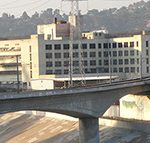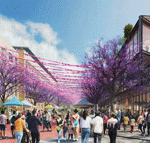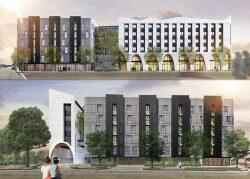A 92-year-old Los Angeles jail that once housed Al Capone may be up for redevelopment.
Newly elected Councilwoman Eunisses Hernandez has called on city departments to look into potential funding to redevelop the Lincoln Heights Jail at 401 North Avenue 19, Bisnow reported.
The five-story concrete jail, built in 1931 and later used to house city departments, has been vacant since 2014. The jail had a history of overcrowding, harsh conditions and abuse, according to Hernandez.
“This parcel of land is sitting vacant and almost entirely unused in the middle of a neighborhood with an unprecedented need for deeply affordable housing, community resources and economic development,” Hernandez said when introducing her motion. “My office will be leading the charge to finally demolish this jail and rehabilitate the land for use that will serve Lincoln Heights and the broader Northeast L.A. community.”
A plan to redevelop the Art Deco jail fell through late last year. Hernandez has asked several city departments to report back in four months on possible funding for projects and a list of what needs to be done in order for it to be reused.
The jail has a checkered past. It was built to hold 625 prisoners, then expanded in 1951. Within a few years, it was holding up to 2,800 inmates, according to the Los Angeles Conservancy.
It was packed during the Zoot Suit Riots in 1943 and during the Watts Riot in 1965. During crackdowns on the city’s LGBTQ community in the 1950s and 1960s, it held many in a separate gay wing. Its most famous inmate was gangster Al Capone.
The Lincoln Heights Jail, decommissioned in 1965, contains asbestos, plus lead and two petroleum tanks below ground, according to the motion.
In 2016, the city put out calls for proposals for the nearly nearly 147,000-square-foot building next to the Los Angeles River. It tapped Lincoln Property and Fifteen Group, which planned a “makers district” with manufacturing, apartments, shops and restaurants.
The developers backed out late last year. Hernandez said that provides “a critical opportunity” to create housing at the site.
— Dana Bartholomew
Read more



